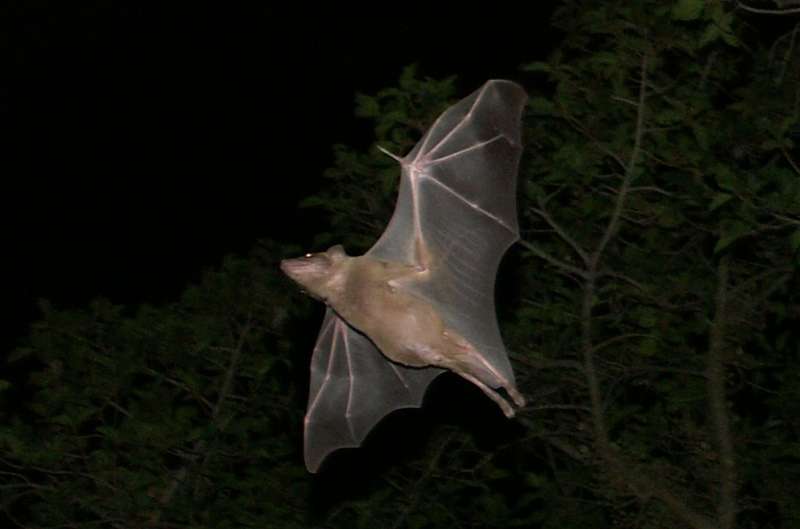December 23, 2016 report
Study of bat vocalizations shows they are communicating with one another

(Phys.org)—A trio of researchers with Tel Aviv University has found that when Egyptian fruit bats make noises in their colonies, they are actually communicating with one another. In their paper published in the journal Scientific Reports, Yosef Prat, Mor Taub and Yossi Yovel describe their study of 22 captive bats for over two months and what recordings of them revealed.
Scientists have known for some time that most bats make a lot of noise when they congregate in their colonies—as the researchers report, this is certainly the case for Egyptian fruit bats—when they roost, they get very loud. But until now, it was not known if the bats were simply making random noises or if their calls served a specific purpose.
To learn more about bat vocalizations, the researchers housed a colony for 75 days and recorded bat sounds and movements on video, capturing 15,000 vocalizations in all. They fed the sounds to a voice-recognition system normally used for human voice analysis configured to work on bat sounds and used it to pull out any meaning that might exist. The VR system was able to connect certain sounds made by the bats to certain social situations and interactions that could then be tied to interactions seen in the video. The researchers grouped the sounds into four main groups: arguing over food, mating and sleeping clusters, and differences of opinion regarding how close was too close when hanging around each other in the colony.
The team reports that in many cases, they were able to identify which bat was making a given noise, and sometimes which bat the noisemaker was addressing. They noted also that the bats tended to change their tones when addressing members of the opposite gender. Much of the cacophony in a bat cluster, the researchers suggest, is bats voicing their annoyance with those in very close quarters around them. They also note that their study of bat vocalizing has not concluded—they still want to know if the vocalizations are something they are born with or if they learn as they grow. To find out, the team plans to study bats as they grow—and to learn more about vocalizations outside of the roost, they plan to affix tiny microphones to some of them prior to releasing them back into the wild.
More information: Everyday bat vocalizations contain information about emitter, addressee, context, and behavior, Scientific Reports 6, Article number: 39419 (2016) DOI: 10.1038/srep39419 , www.nature.com/articles/srep39419
Journal information: Scientific Reports
© 2016 Phys.org


















